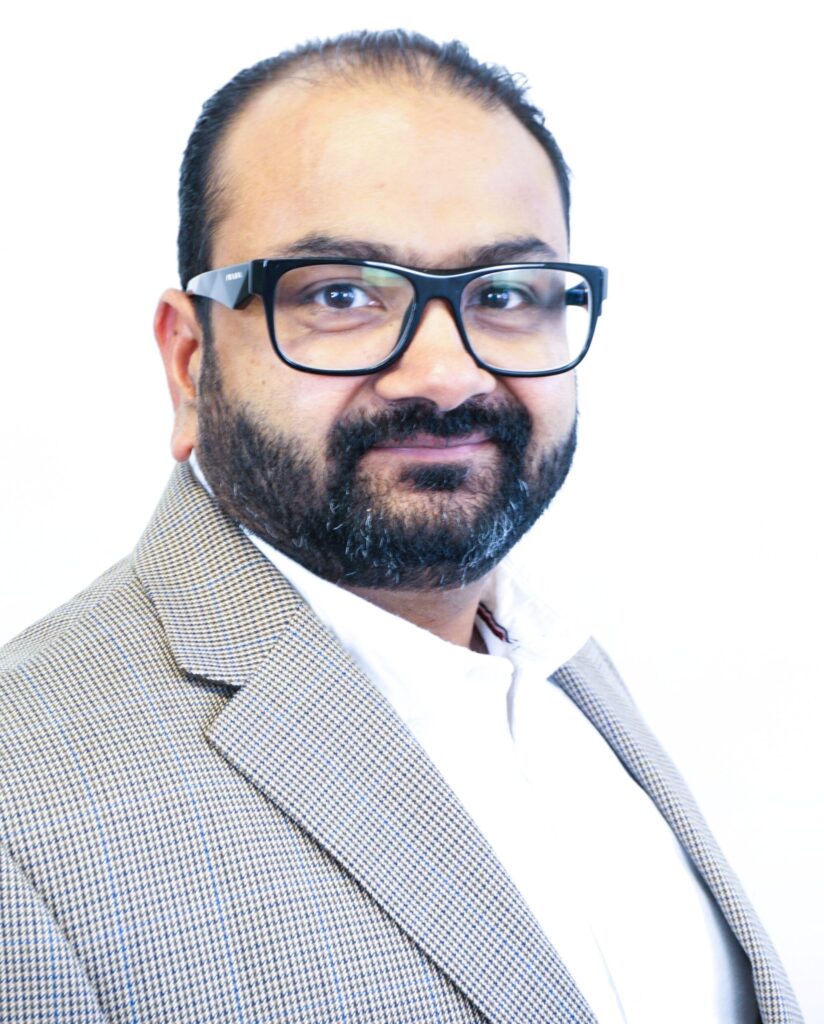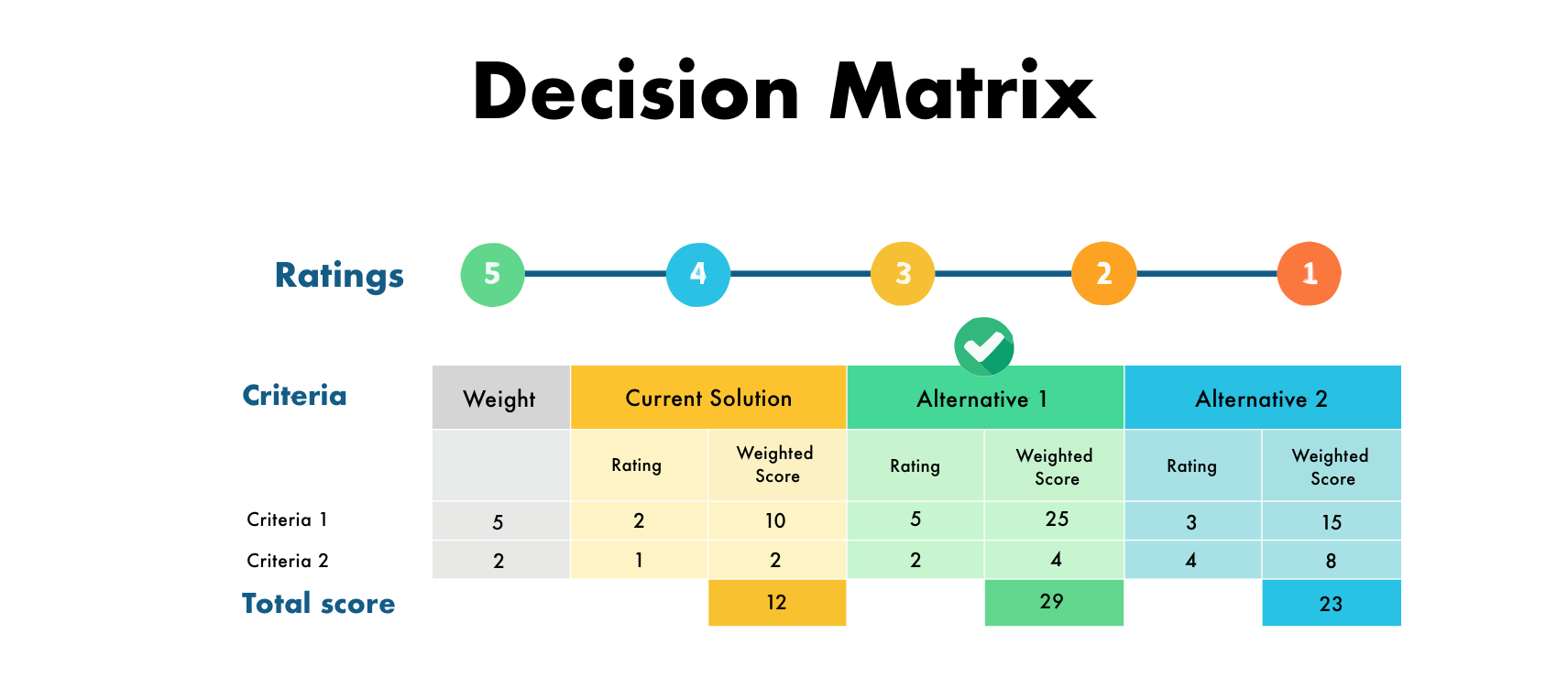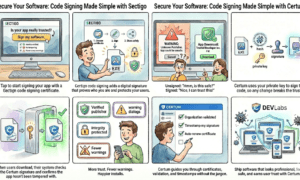The contemporary business landscape is characterized by unprecedented volatility and a relentless demand for agility. Enterprise resource planning (ERP) systems, the digital backbone of modern organizations, are under immense pressure to evolve beyond their traditional roles as rigid, monolithic record-keepers.
The US ERP market’s significant growth has a growth trajectory fueled by widespread digital transformation initiatives and an escalating need for operational efficiency. This expansion underscores a pivotal shift towards more intelligent, adaptable, and integrated ERP solutions.
Successfully navigating this transformation requires visionary leadership capable of harmonizing complex technologies and methodologies to deliver tangible, measurable business outcomes. The ability to not only implement technology but to fundamentally reshape how businesses operate and compete is paramount.
At the forefront of this evolution is Sagar Gupta, an ERP Implementation Leader with over two decades of profound experience in technology leadership, specializing in ERP implementations, cloud computing, and the strategic application of cutting-edge technologies. He champions a holistic approach to ERP transformation, orchestrating end‑to‑end projects that masterfully employ Agile and DevOps methodologies, advocate for strategic minimal customization, and leverage robust cloud strategies.
This vision is not abstract; it consistently translates into quantifiable results, as evidenced by his track record. These achievements are particularly noteworthy as they are realized while preserving crucial system upgradeability and scalability—a common casualty in many large-scale ERP endeavors.

Sagar Gupta
Gupta’s expertise is further distinguished by his ability to seamlessly integrate third‑party systems, such as Customer Relationship Management (CRM) and Business Intelligence (BI) tools, and to harness the power of AI/ML‑driven analytics, IoT‑enabled data, and Industry 4.0 technologies.
This comprehensive integration empowers organizations with real‑time, data‑driven decision-making capabilities across diverse business functions. His professional journey includes pivotal roles such as ERP Implementation Leader at EST03, where he directed end to end ERP implementation for the entire organization, and IT Solutions Manager at Damco Solutions, where he spearheaded transformative IT strategies for a multitude of clients. The consistent delivery of such metrics points to a refined methodology that effectively mitigates common ERP implementation risks, suggesting that his holistic approach is a key causal factor for these superior outcomes.
The modern ERP landscape is increasingly defined by its interconnectedness and intelligence. The integration of ERP and CRM systems, with empirical studies demonstrating significant improvements in customer satisfaction, reported by 78% of respondents in one study, and an 85% enhancement in operational efficiency. However, the path to such integration is not without its obstacles, which commonly include data inconsistency and the inherent complexity of merging disparate systems.
Gupta’s approach directly confronts these challenges by emphasizing strategic, well-architected integrations and a philosophy of minimal, yet impactful, customization. This stands in contrast to the common pitfall of excessive customization, which research consistently shows leads to escalated costs, formidable upgrade challenges, and diminished vendor support. His advocacy for Agile methodologies is timely, as Agile adoption within software development teams surged to 86% in 2021, with these practices offering enhanced flexibility and a reduction in project risks.
Furthermore, the infusion of AI and predictive analytics is revolutionizing forecasting and planning in ERP. Simultaneously, the Internet of Things (IoT) is transforming ERP capabilities. The convergence of ERP with Industry 4.0 technologies, notably digital twins, further amplifies these capabilities, creating a more dynamic and responsive enterprise ecosystem.
Evolution of methodology: From traditional ERP implementations to the holistic, Agile, and DevOps‑driven approach
The landscape of ERP implementation has undergone a significant metamorphosis. Historically, ERP projects were often synonymous with monolithic architectures and rigid, sequential software development life cycle (SDLC) models.
While these traditional methods provided a degree of structure, their inherent inflexibility proved increasingly inadequate in the face of rapidly evolving business environments that demand speed and adaptability. This realization prompted a profound shift in implementation philosophies for forward-thinking leaders.
Gupta recognized this critical juncture early in his career, leading to a significant transition in his methodology. He states, “Traditional ERP rollouts were rooted in monolithic architectures and followed a sequential SDLC model. But as business environments became increasingly volatile, I transitioned toward a microservices-aligned ERP implementation strategy underpinned by Agile Scrum and DevOps pipelines.”
This strategic pivot is not merely a change in tools but a fundamental rethinking of how ERP systems are designed, deployed, and managed to deliver continuous value. The move towards microservices, for instance, directly addresses the rigidity of monoliths by breaking down complex applications into smaller, independently deployable services, a practice that is known to accelerate scalability, improve fault isolation, and enable quicker deployment times, all of which are critical for the dynamic nature of modern ERP systems. This approach treats ERP components not as static entities but as evolving services that can adapt to business changes more readily.
Gupta’s modernized methodology is deeply rooted in the principles and technologies of cloud-native development, a move that recasts ERP modernization in the light of broader application modernization trends. “We’ve containerized non-core ERP services using Docker and orchestrated them via Kubernetes for modular deployment,” he elaborates.
This adoption of containerization with Docker and orchestration with Kubernetes is a cornerstone of modern application deployment, offering unparalleled scalability, portability, and efficient management of containerized applications, which are vital for complex ERP ecosystems.
This approach allows different ERP modules, like sales order processing, to scale independently based on demand without impacting other, less load-intensive modules like core finance. Further enhancing this agile framework is a robust Continuous Integration/Continuous Deployment (CI/CD) process.
Gupta explains, “Our CI/CD process now leverages Infrastructure-as-Code (IaC) using tools like Terraform and Ansible, ensuring rapid, repeatable provisioning across cloud-native and hybrid environments.” The use of IaC tools like Terraform and Ansible automates the creation and maintenance of the underlying ERP infrastructure, drastically reducing manual effort, minimizing human error, and ensuring consistency across development, testing, and production environments.
This paradigm shift, as Gupta emphasizes, has empowered his teams “to decouple release cycles, maintain high availability, and introduce incremental innovation with minimal system disruption,” directly aligning IT capabilities with the dynamic needs of the business. The strategic implementation of Agile and DevOps.
This linkage between Agile/DevOps adoption and tangible business benefits—such as faster feature delivery, critical system uptime, and the capacity for ongoing, non-disruptive ERP evolution—highlights how technical choices, when strategically implemented, translate directly into business value and risk mitigation.
The fear of disrupting critical operations, often a barrier to ERP evolution, is significantly lessened when changes can be introduced incrementally and with lower individual risk.
“Just‑Right” customization: Criteria for tailoring ERP systems versus adopting out‑of‑the‑box functionality
The allure of tailoring an ERP system to perfectly match existing business processes can be strong, yet it often leads down a path of increased complexity, higher long-term costs, and significant upgrade challenges. Excessive customization can introduce risks such as prolonged implementation times and complex upgrade paths, potentially negating the benefits of a standardized platform by making the system difficult to maintain and scale.
Gupta champions a pragmatic and strategic approach he terms “just-right” customization, which elevates the decision beyond a mere technical fix to a crucial business strategy. He elaborates, “We apply a decision matrix based on system criticality, domain specificity, and extensibility impact. Customizations are greenlit when they intersect with unique value-chain differentiators or where middleware orchestration cannot bridge the functional gaps.”

This methodical evaluation ensures that modifications are undertaken not for convenience or to replicate outdated processes, but for genuine strategic advantage. Such a framework forces a rigorous business case justification for each customization, weighing the benefits of bespoke functionality against the risks of higher costs and complex upgrades. This disciplined approach helps to avoid scope creep and ensures that customization efforts are focused where they deliver maximum return on investment.
Central to Gupta’s philosophy is the unwavering commitment to preserving the ERP system’s core integrity and ensuring its future viability, particularly its upgradeability and scalability. “We assess extensibility using clean architecture principles and favor abstraction layers that allow us to inject business-specific logic without violating the ERP’s core data integrity constraints,” he asserts.
This adherence to Clean Architecture, which emphasizes the separation of concerns to protect core logic, ensures that custom logic enhances, rather than corrupts or complicates, the standard system. This is the technical linchpin that enables targeted customization while safeguarding the core.
For functions that are not unique differentiators, such as standard general ledger operations or fixed asset management, Gupta’s teams “adhere strictly to standard configurations, leveraging the ERP’s metadata-driven frameworks and API endpoints rather than altering the core schema or service layer.”
This practice of prioritizing vendor-supported extensibility mechanisms is crucial. It aligns with vendor recommendations, such as Oracle’s emphasis on using APIs for extensions to maintain upgrade safety, and mirrors strategies like the SAP Clean Core.
By utilizing metadata-driven frameworks, the system can be adapted through configuration, adjusting settings and parameters within the vendor’s provided structure, rather than through invasive code changes. This fosters a healthier, more sustainable ERP environment, reducing reliance on fragile custom code and ensuring a smoother path for future upgrades and innovations.
Realizing impressive metrics: Practices and decisions with the greatest impact
The significant improvements reported under Gupta’s leadership—a 40% increase in operational efficiency, a 30% reduction in infrastructure costs, and a 25% boost in productivity—are not isolated achievements but the direct result of a confluence of deliberate architectural, methodological, and technological choices. These figures are particularly compelling when viewed against typical outcomes of ERP implementations in manufacturing.
Gupta pinpoints several key technical accelerators that have been instrumental. “First, we employed domain-driven design (DDD) to model bounded contexts in complex ERP landscapes, which drastically improved modularity and team ownership,” he explains.
DDD is a powerful approach for tackling complexity in large systems like ERPs. By breaking down the system into logical, business-aligned modules, DDD fosters clearer responsibilities, reduces interdependencies, and makes the system easier to understand, maintain, and evolve. This enhanced modularity, when combined with a robust integration strategy, creates a powerful synergy.
“Second, our enterprise service bus (ESB) and event-driven architecture enabled asynchronous communication and decoupled systems, reducing latency and transactional bottlenecks,” Gupta adds. This architectural choice allows different parts of the ERP landscape and connected applications to communicate effectively and asynchronously without forming tight, brittle dependencies, thereby enhancing resilience and performance.
Further amplifying these results is the intelligent application of targeted automation and comprehensive system monitoring, which form a critical feedback loop for continuous improvement. Gupta elaborates, “Third, robotic process automation (RPA) was layered atop ERP UI workflows using tools like UiPath to automate high-frequency, rule-based operations, significantly reducing manual FTE dependencies.”
By focusing RPA on high-frequency tasks that may not have readily available APIs, the return on automation investment is maximized.
To ensure these complex, integrated, and partially automated systems perform optimally and reliably, Gupta emphasizes the indispensable role of visibility: “Additionally, telemetry instrumentation via ELK stack and Prometheus gave us real-time observability and SLA-based optimization.”
This rich telemetry data enables a data-driven approach to managing and enhancing ERP performance, allowing teams to pinpoint inefficiencies, understand the impact of changes, and proactively address issues before they affect business operations, thus sustaining high performance and efficiency.
This combination of modular design, decoupled integration, targeted automation, and robust observability creates a virtuous cycle, where each practice reinforces the others, leading to compounded and sustainable improvements in key business metrics.
Navigating complexity: Integrating third‑party systems like CRM and BI
The integration of core enterprise systems is a critical enabler of holistic business insight and streamlined operational efficiency. Yet, this endeavor is notoriously complex, and achieving this seamlessness requires navigating significant technical hurdles.
Common challenges include data inconsistency across systems, the difficulty of reconciling differing data models, managing complex system architectures, and the need to harmonize disparate business processes that these systems support. Gupta recounts a particularly demanding project that exemplifies these issues: “We once orchestrated a tri-system integration involving NetSuite ERP, HubSpot CRM, and a Snowflake-powered BI warehouse. The primary challenge was ensuring referential integrity across disparate data models while maintaining low ETL latency.”
This scenario perfectly encapsulates the typical pain points encountered when organizations strive to create a unified and responsive data landscape from heterogeneous systems. The need to maintain data integrity across systems with different schemas while ensuring rapid data availability for analytics presents a formidable technical challenge.
Addressing such intricate integration challenges necessitates a sophisticated, multi-layered technical strategy that moves beyond simple point-to-point connections towards a more resilient and adaptable data fabric. Gupta details the multifaceted approach his team employed: “We implemented an event-sourcing strategy using Kafka to stream transactional deltas in real time and employed Apache NiFi for robust data lineage and transformation orchestration.”
The use of Apache Kafka enables the near-instantaneous propagation of transactional changes across the integrated systems. Complementing Kafka, Apache NiFi, though not detailed in the snippet, is recognized as a tool for data orchestration, which can include data lineage and transformation.
A pivotal element in achieving data consistency across these diverse platforms was a focus on master data. “Master data harmonization was achieved through a canonical data model,” Gupta notes. This practice of establishing a common, standardized data definition is essential for ensuring a single version of truth and semantic consistency when integrating data from multiple, disparate systems.
To provide flexible and efficient data access for analytical and front-end applications, “we deployed GraphQL APIs to abstract data access layers, allowing front-end apps to query composite datasets efficiently.” GraphQL APIs offer benefits for accessing composite datasets due to their single endpoint and flexible querying capabilities. Finally, to proactively combat issues of data lag and data divergence between the systems, “we also implemented CDC (Change Data Capture) mechanisms to minimize sync lag and data drift.”
CDC is a comprehensive strategy, combining event-driven architecture, robust data orchestration, master data harmonization, flexible data access, and real-time change detection, illustrates a mature approach to building a data ecosystem that is not only integrated but also resilient, agile, and capable of supporting evolving business intelligence needs.
Reshaping ERP capabilities: The role of AI and machine learning analytics in forecasting and decision‑making
The integration of AI and ML is rapidly transforming ERP systems from passive repositories of historical data into proactive, intelligent engines for forecasting, planning, and decision-making. This shift is profound, as AI is driving significant transformation in ERP systems.
Gupta is at the vanguard of this evolution, not merely bolting on AI capabilities but embedding these advanced analytical tools directly into the operational fabric of ERP solutions. “We’ve integrated TensorFlow and scikit-learn models directly into ERP layers via RESTful inference APIs, enabling real-time prescriptive analytics,” he states.
Such an approach moves the ERP system beyond simple data reporting to providing actionable, forward-looking insights that can guide immediate business actions, a leap from predictive to prescriptive capabilities.
Gupta offers a compelling and concrete illustration of AI’s tangible impact on ERP-driven operations: “For a global CPG client, we built a supervised learning model to forecast SKU-level demand using LSTM neural networks trained on multi-variate time series data—blending sales history, macroeconomic indicators, and sentiment analysis from social media feeds.”
The sophistication of incorporating macroeconomic indicators and, notably, social media sentiment analysis demonstrates an innovative approach to capturing leading indicators of consumer behavior. The results of this AI initiative were transformative for the client: “The model outputs were piped into the ERP’s MRP engine, dynamically adjusting reorder points and safety stock thresholds. This AI-augmented MRP led to a 35% drop in stockouts and improved fill rates across regional distribution centers.”
This outcome powerfully demonstrates the significant benefits of AI in production planning. The 35% reduction in stockouts is a hard business metric, directly impacting revenue, customer satisfaction, and operational efficiency, thereby providing a clear return on investment for the AI integration. This focus on measurable business value is critical for justifying and scaling AI initiatives within the enterprise.
Transforming sensor streams: Effective approaches for IoT data in ERP environments
The explosion of IoT devices presents both a monumental opportunity and a significant data management challenge for enterprises: how to effectively harness the torrent of raw sensor data and transform it into actionable operational insights within their ERP systems.
Gupta outlines a robust architectural strategy designed to handle this data deluge and extract maximum value. “We implement a Lambda architecture to manage high-throughput IoT data,” he explains. “Edge devices preprocess and normalize data using MQTT protocols and send it to both stream and batch layers.”
The Lambda architecture is designed for processing large volumes of data by separating it into a batch layer for comprehensive historical analysis and a speed (stream) layer for real-time processing. This dual-path approach is critical as IoT data often serves both immediate operational needs and long-term strategic analysis. The use of MQTT protocols for preprocessing and normalization at the edge, before data transmission, is a crucial step for managing data volume, ensuring data quality, and reducing the load on central networks and systems.
The true transformative value of IoT data is unlocked when it is meticulously processed and analyzed to drive intelligent, automated actions within the enterprise. “The stream processing is handled via Apache Flink, which flags anomalies or threshold breaches in near real-time, while the batch layer aggregates sensor data into time-series databases for ERP insights,” Gupta elaborates. Apache Flink is a powerful stream processing engine capable of analyzing real-time data streams for tasks like anomaly detection and pattern recognition.
To ensure seamless and standardized communication with industrial control systems on the factory floor, Gupta’s team also “leverages OPC-UA standards for interoperability with PLC systems on the shop floor.” He provides a concrete example of this synergy in action: “In one instance, we used ML anomaly detection models to preemptively detect bearing wear in conveyor motors—automating preventive maintenance tasks in the ERP with IoT-triggered service orders.”
This closed-loop system, where IoT insights directly trigger actions (like creating service orders) within the ERP, exemplifies how these technologies can make the ERP a more dynamic, responsive, and proactive operational hub.
Weaving the future: Integrating industry 4.0 technologies into ERP frameworks
The principles of Industry 4.0, characterized by the pervasive connectivity of cyber-physical systems, deep automation, and data-driven intelligence, are fundamentally reshaping how manufacturing and other industrial operations are conceived and managed. Integrating these advanced technologies into the core of ERP frameworks allows for unprecedented levels of operational insight, simulation capability, and automated control.
Gupta is actively pioneering this integration, demonstrating how ERP systems can evolve into central orchestrators of smart operations. He states, “We’ve embedded digital twin simulations using Unity and Siemens’ MindSphere, linking them via OPC-UA and MQTT to real-world assets.”
By connecting these digital twins, developed with visualization tools like Unity and powered by IoT platforms such as Siemens’ MindSphere, directly with ERP production planning modules, Gupta’s teams can conduct “real-time what-if analysis for throughput optimization and failure simulation.” This powerful capability allows businesses to test various production scenarios, evaluate the impact of potential disruptions, or optimize resource allocation in a risk-free virtual environment before committing resources or making changes in the physical world.
The insights gained from these simulations then inform and refine the production plans managed within the ERP, leading to more resilient, efficient, and optimized operations. The use of OPC-UA and MQTT ensures robust and standardized data flow between the physical assets on the shop floor and their digital representations.
Beyond sophisticated simulation and predictive capabilities, Industry 4.0 drives deeper, more intelligent automation of core manufacturing workflows, orchestrated seamlessly between shop-floor execution systems and enterprise-level planning systems. Gupta elaborates on this aspect: “Automated manufacturing workflows are orchestrated using BPMN 2.0 engines (like Camunda), which act as the orchestration layer between MES, ERP, and SCADA systems.”
The Workflow Engine orchestration is not static or pre-programmed rigidly; rather, “Workflow decisions are driven by live sensor inputs and ERP master data, effectively enabling a closed-loop manufacturing control system.”
Such a dynamic, data-driven system, as Gupta points out, is designed to “reduce human touchpoints and optimize lead time via dynamic resource allocation,” directly impacting operational efficiency, agility, and responsiveness. For instance, a real-time alert from a SCADA system about a machine malfunction could trigger a BPMN workflow that automatically updates the production status in the MES, notifies the relevant maintenance personnel via the ERP’s communication module, and simultaneously adjusts the production schedule in the ERP to reroute work or reallocate resources. This intelligent interplay between real-time operational data and strategic ERP master data, facilitated by a robust workflow engine, is what brings the vision of the smart factory closer to reality.
The five‑year horizon: Convergence of agile ERP, AI/ML, IoT, and industry 4.0
Looking towards the horizon of the next five years, the convergence of Agile ERP methodologies with the transformative power of AI/ML, the pervasive sensing capabilities of IoT, and the deep connectivity of Industry 4.0 is set to redefine the very nature of enterprise systems. Gupta envisions a future where the traditional ERP, often perceived as a rigid back-office monolith, undergoes a profound evolution.
“We’re heading toward a cyber-physical continuum where ERP evolves from a back-office monolith into a distributed, autonomous coordination layer powered by intelligent agents,” he predicts. In this future state, “AI/ML will be deeply embedded in operational loops—not as add-ons, but as native decision engines,” continuously learning and optimizing processes. This aligns with broader trends in the future of cloud ERP.
Furthermore, emerging technologies like blockchain or distributed ledgers could play a crucial role in validating transactions in multi-party ecosystems, thereby enhancing trust, security, and transparency in complex supply chains and inter-company collaborations. This vision paints a picture of an ERP that is less a system of record and more a dynamic, responsive, and intelligent nervous system for the enterprise.
For organizations preparing to embark on this transformative journey towards a more converged and intelligent enterprise ecosystem, Gupta offers several pieces of critical advice, emphasizing foundational architectural principles, cultural shifts, and a steadfast focus on governance. “My advice: architect for composability and semantic interoperability,” he stresses.
This involves designing systems as a collection of modular, independently deployable services that can communicate effectively through well-defined interfaces and shared data understanding (composable ERP).
He further advises organizations to “Invest in event-driven, service-oriented ERP layers with decoupled data contracts.” This architectural style promotes loose coupling, real-time responsiveness, and the ability to evolve individual components without disrupting the entire system. Beyond technology, a cultural transformation is paramount: “Foster a DevSecOps culture that spans business, IT, and OT.”
Perhaps most critically, as these converged ecosystems scale and become more data-intensive, Gupta underscores the need to prioritize data sovereignty and governance.”
In a world of distributed data and autonomous decision-making, clarity on data ownership, adherence to regional data protection regulations (data sovereignty), and robust data governance frameworks are no longer optional but fundamental prerequisites for trust and compliance.
He concludes with a powerful insight: “Future ERP success won’t be about features, it’ll be about intelligence, resilience, and trust.”
The evolution of ERP systems, as charted through the experiences and insights of Gupta, reveals a clear trajectory from rigid, back-office tools to intelligent, agile, and deeply interconnected platforms that form the nerve center of the modern digital enterprise. His journey vividly illustrates a holistic approach, beginning with the foundational shift towards Agile and DevOps methodologies to dismantle monolithic structures and foster continuous innovation.
This is coupled with a strategic and principled stance on customization, favoring minimal, value-driven modifications that preserve core system integrity and upgradeability. Gupta’s work consistently demonstrates how to harness a complex array of technologies—from sophisticated, event-driven integration patterns for seamless data flow across ERP, CRM, and BI systems, to the embedding of AI and ML for predictive and prescriptive power in areas like demand forecasting and material requirements planning.
Furthermore, his success in transforming raw IoT data into actionable intelligence through advanced architectures like Lambda and real-time stream processing, and weaving in Industry 4.0 concepts such as digital twins and automated workflow orchestration, underscores a commitment to leveraging the full spectrum of technological advancements. These efforts consistently deliver measurable business value by enhancing operational efficiency, significantly reducing infrastructure costs, and boosting workforce productivity.
His forward-looking perspective on the inevitable convergence towards distributed, autonomous, and composable ERP ecosystems—powered by intelligent agents and underpinned by robust DevSecOps cultures and stringent data governance—offers a compelling and actionable roadmap for organizations aiming not merely to navigate but to lead in an increasingly digital-first world.
Ultimately, the journey highlights that the future of enterprise operations hinges on a meticulously orchestrated symphony of technological prowess, strategic foresight, a profound understanding of core business drivers, and an unwavering focus on building systems that are intelligent, resilient, and trustworthy.


































